from renovation to full Passive House
Lecture for the PHIUS – 10-2016 Philadelphia
Julie Torres Moskovitz and Sebastian Moreno-Vacca for M2A architecture (FNA + A2M)
Introduction
In Belgium, the Brussels-Capital Region is witnessing a Passive House revolution. The regional government enacted a law that took effect on Jan 1, 2015 that requires Passive House for all new construction projects and retrofits that involve 75% of their building envelope.
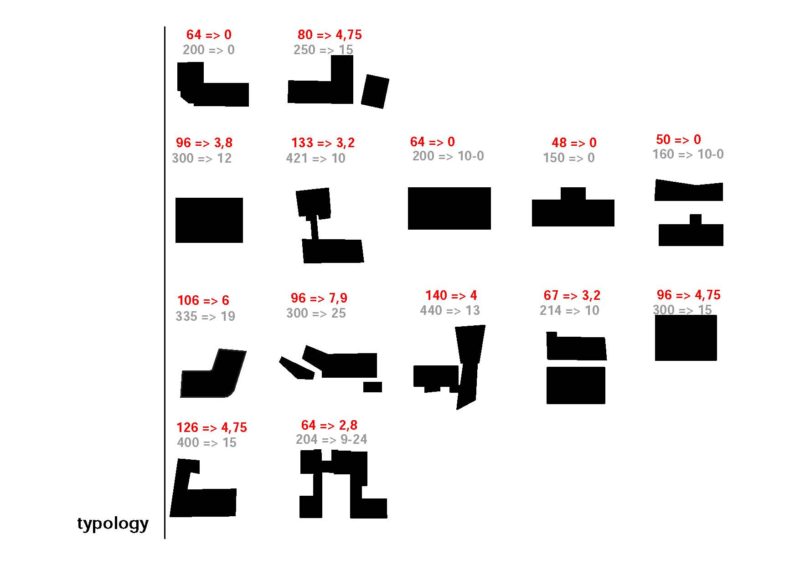
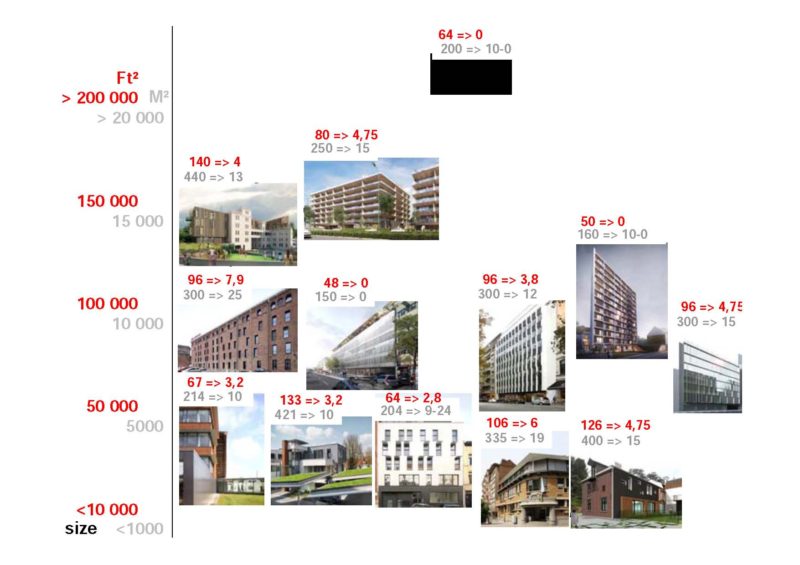
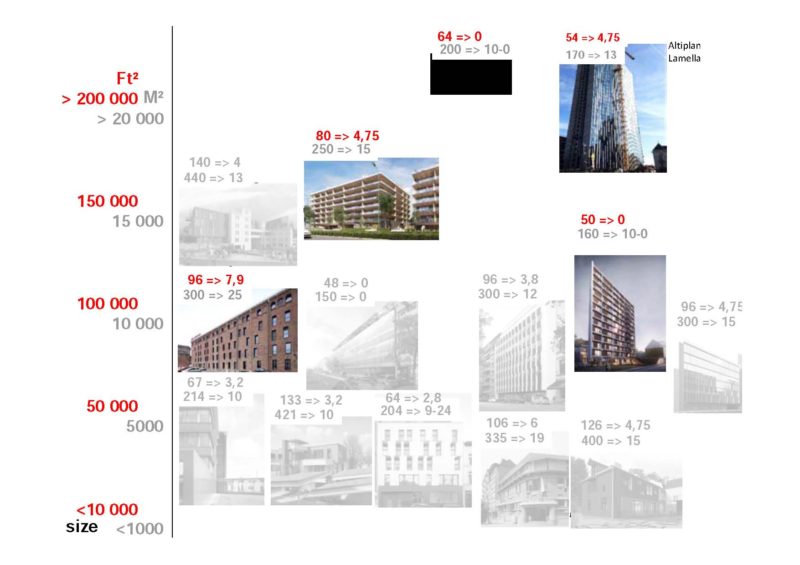
These renovation case studies are those where the scope of work pertains to more than 75% of the building envelope. In that context, the presentation attempts to show how different large-scale retrofits meet full Passive House criteria. The subject matter is illustrated, not only through some of our own projects, but through several examples of other architecture firms in Brussels. Different cases of existing building stock, from landmarked to mundane buildings from the 1950s thru 1980s, will be discussed. Each of these buildings required substantial renovations and adaptive reuse due to economic market pressures, interior thermal comfort concerns, or today’s urban programmatic needs. In other words, all of these buildings had become obsolete and under-utilized.
The challenge is providing a contemporary answer, adapting the building to the desired program, drastically reducing energy consumption, all the while respecting the rich heritage offered by the building.
Each of the projects features different construction types, varied challenges, and unique strategies for renovating. Ingenious and multiple solutions were found to reconcile preserving aesthetic historic assets with budget and energy performance goals: interior insulation, air tightness, prefabrication, thermal bridges, water vapor transfer, ventilation, solar shading, passive cooling strategies, centralized technical management, etc.
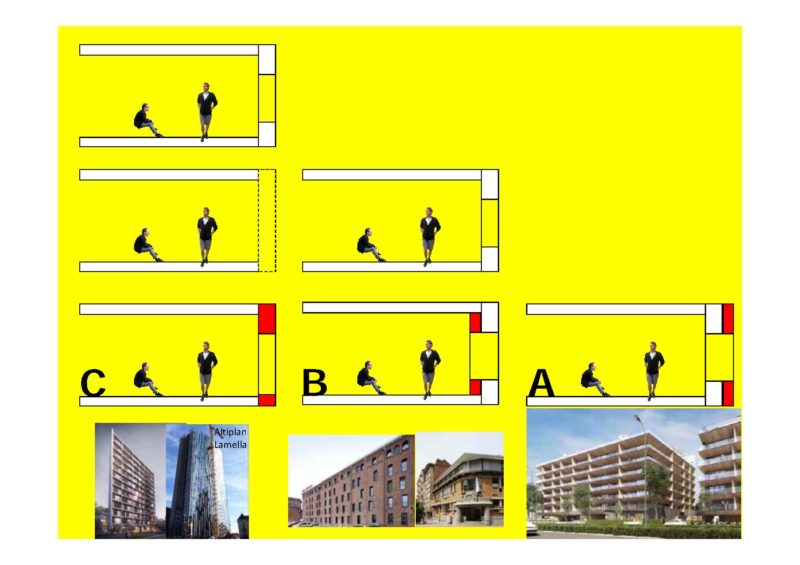
Concepts, technical details, hygrothermal studies (Trisco, WUFI) showing movement of heat and moisture through the building envelope, and site photos will be presented. For the completed renovations, the calculations made in the design phase (PHPP, dynamic simulations) will be compared with actual consumption established through monitoring systems.
Most of these buildings are also winners of the « Exemplary Buildings » call for projects of the Brussels-Capital Region [1]. Indeed, in addition to being energy efficient, other sustainability parameters have been taken into account, such as choice of materials, natural lighting, water management, etc.
The projects offer different solutions, each providing architectural value by combining high-design intervention with respect for heritage.
2 Methods
3 specific cases are discussed:
– the renovation of a brewery into a hotel (completed and monitored for several years),
– the renovation of a high-rise office building (completed recently)
– the renovation of a high-rise social housing block (in renovation)
The first project has been implemented in accordance with Passive House principles. The project is special in that it concerns the retrofit of a listed building in an industrial conservation area dating from 1912. The building’s heating needs were of 150 kWh/m² a and now don‘t exceed 25 kWh/m² a.
The second renovation was calculated under the Brussels Passive House law and will be delivered in fall 2016. The heating needs don’t exceed 15 kWh/m².yr in PHPP (19 with the EPB Belgian energy calculation).
The third project, designed at the end of 2015, is under renovation. Because it was implemented with renewables, the project will go beyond full Passive House to be closer to Zero Energy.
All projects were modeled using the Passive House Planning Package (PHPP). Some of them have been also studied with dynamic simulations, making it possible to comply with the EN 15 251 (European code criteria in terms of comfort). This is mandatory for non-residential buildings. Hygrothermal studies using Trisco and WUFI show how well the building assemblies perform in terms of moisture movement. For the completed renovations, the authors have compared the modeled calculations made in the design phases using the PHPP and dynamic simulations with the actual consumption established through monitoring systems in place for completed projects.
3 Cases studies
AHotel, A2M architectsBellevue Meininger Hotel, Brussels [2] Client: Nelson Canal98 000 ft² 9 800 m²From 1916 to 2013Heating demand (phpp):
|
BOffice building, Altiplan and Lamela Studio architectsAstro Tower, Brussels [3] Client: Luri 1 + Luri 2382 000 ft² 38 200 m²From 1974 to 2016Heating demand (phpp)::From 170 kWh/m² .a to 15 kWh/m² .aFrom 54 => 4,75 kBtu/ft².yr |
CSocial housing and childcare, A2M architectsLinné, Brussels [4] |
|
| BackgroundThe building of the Belle-Vue brewery dates from 1916 and is one of the best known reminders of the Brussels’ industrial past.The brewery was subsequently taken over by different operators and the activities moved to Leuven in 2005.In 2009, a group of private investors and the Municipality of Molenbeek acquired the site with an ambitious purpose. The aim was to deploy an innovative project that combined urban renewal, the showcasing of industrial and historical heritage, energy performance, integration into society and working environment, and the promotion of tourism for one of the oldest developments of Brussels: the canal.The project combines hotel accommodation, housing and leisure activities. A “very low energy” 150-room hotel was constructed in the main building (the former warehouse).
EnvelopeInternal insulation. |
The Astro tower has taken a prominent place in the Brussels ‘skyline’ since 1974.The major renovation preserves the building’s original morphology while finding a new identity and making the building much more efficient.The base, connecting the building with the surrounding area, is being reconfigured to provide a new entrance sequence and a more harmonious relationship with the neighbourhood.The entire building will host Actiris, the employment offices of the Brussels Region.On delivery in 2016 the renovated Astro tower will be the tallest passive building in the Brussels Region.
External insulation. |
The site consists of two buildings located near the North train station, in a complex area, both in urban and social level. The building located in the Linné street side is a social housing tower from the 1960s rising up to 13 levels. This tower has a marked architectural style and is a landmark in the neighborhood. The building is in a very dilapidated state and the space around and between the two buildings is not defined at all. The project’s main goal is to redefine the public and private spaces by performing a thorough renovation of the two buildings and creating a new landscaping for the residents of the buildings and the neighbourhood. The two buildings will host 50 social apartments. A new nursery and a large green space will complete and animate the project. The whole project is passivehouse and solar panels will be implemented to achieve zero energy performance. External insulation. The building’s envelope was dismantled and will be fully covered with new OSB sandwich elements filled with cellulose 11.8 inch (30 cm) + hydroflam panel.They are prefab panels including all the elements (windows, airtightness membrane, etc.).This allows to keep the existing structure without reinforcing it and reduces the site work delay. |
|
| Passive cooling strategies
Adiabatic cooling system to precool the air. |
No specific passive strategies, low g value of the glass (0,35) is enough to stay under 15 kW/h.m².yr.Cooling ceilings has been foreseen. | External solar protections. | |
| Air-tightness
0.44 Vol/h |
0.60 Vol/h | 0.60 Vol/h | |
| Costs9
8 $/ft² 980 €/m² ExclVAT |
130$/ft² 1300 €/m² ExclVAT | 150 $/ft² 1500 €/m² ExclVAT | |
| Monitoring
The building has been occupied since mid-2014. The monitoring shows a heat and hot water energy consumption of about for approx. 600 to 700 users per day ! |
The renovation work is in progress and the building will be delivered in 2016. | Some apartments were monitored before the renovation to record energy demand and measured values of temperature and relative humidity. After renovation, the whole building will be monitored during at least 5 years. | |
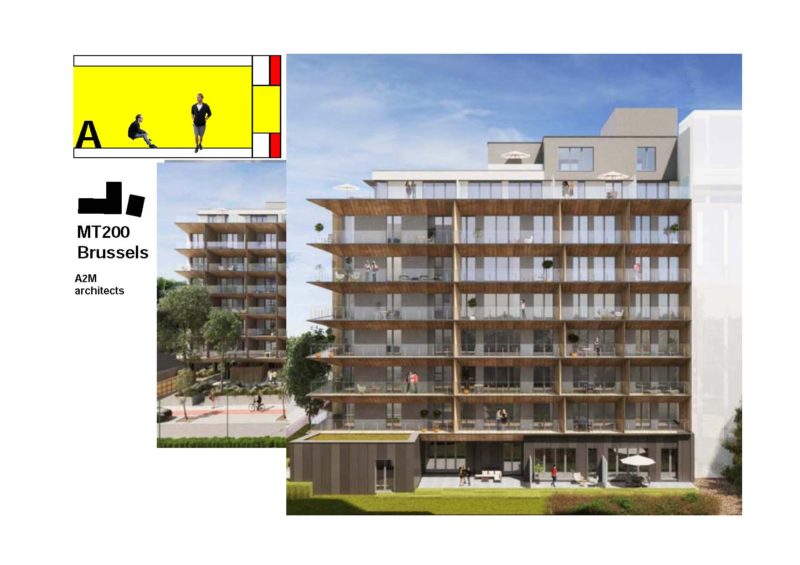
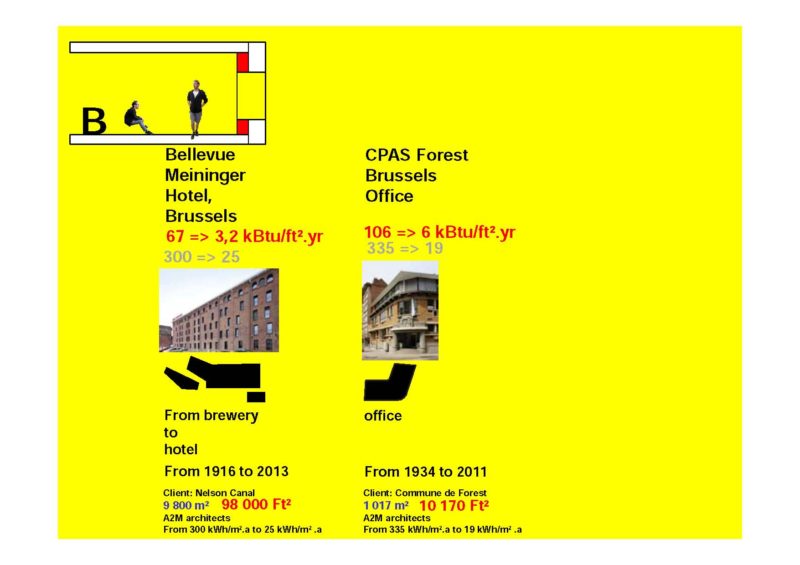
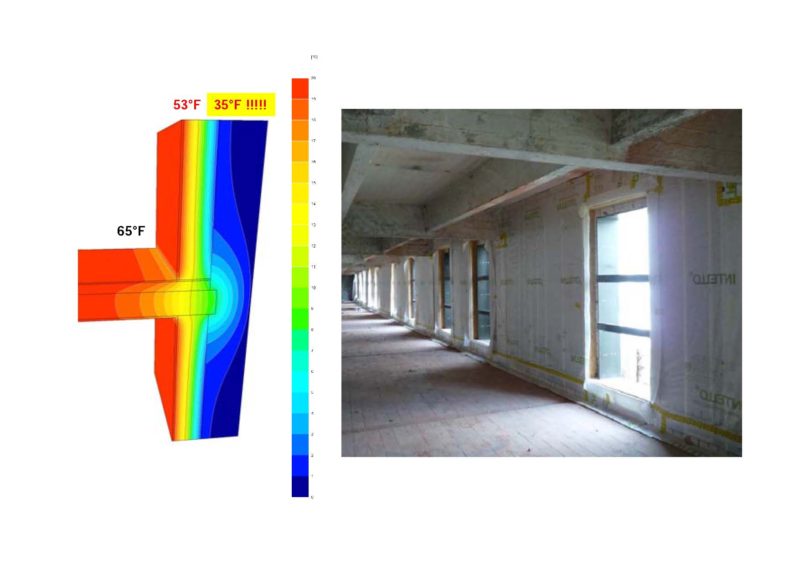
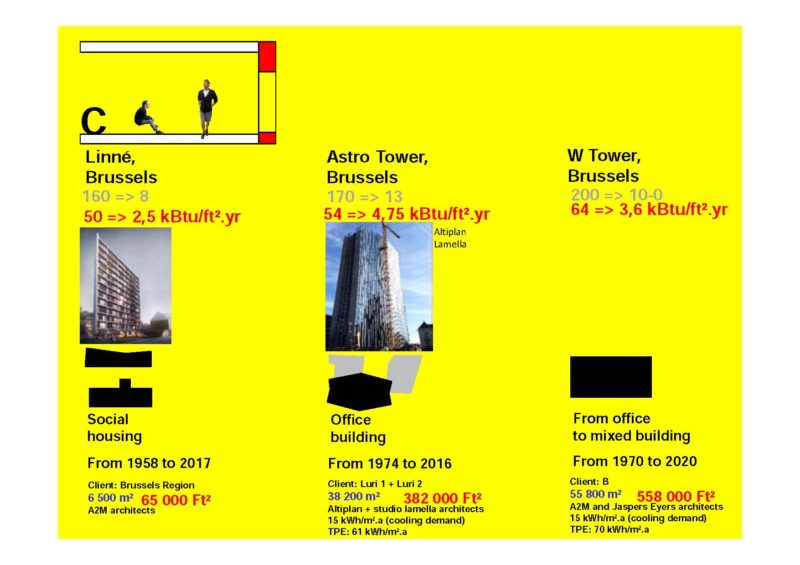
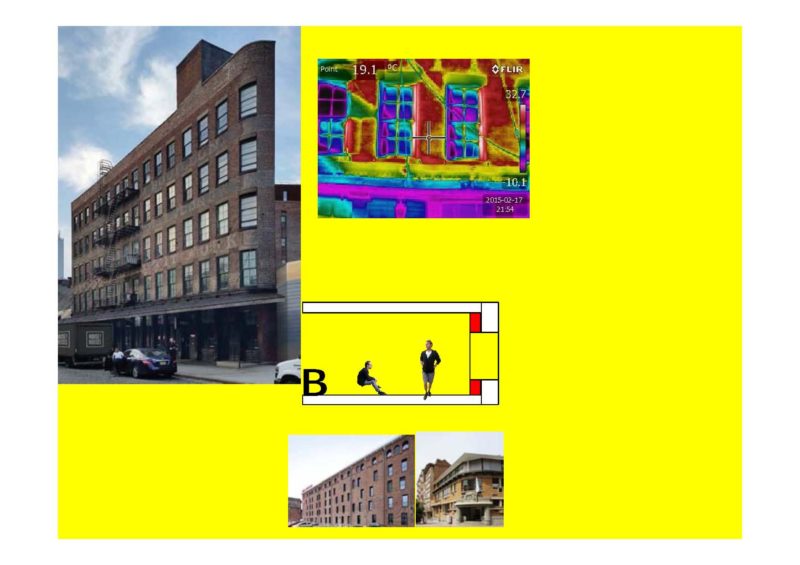
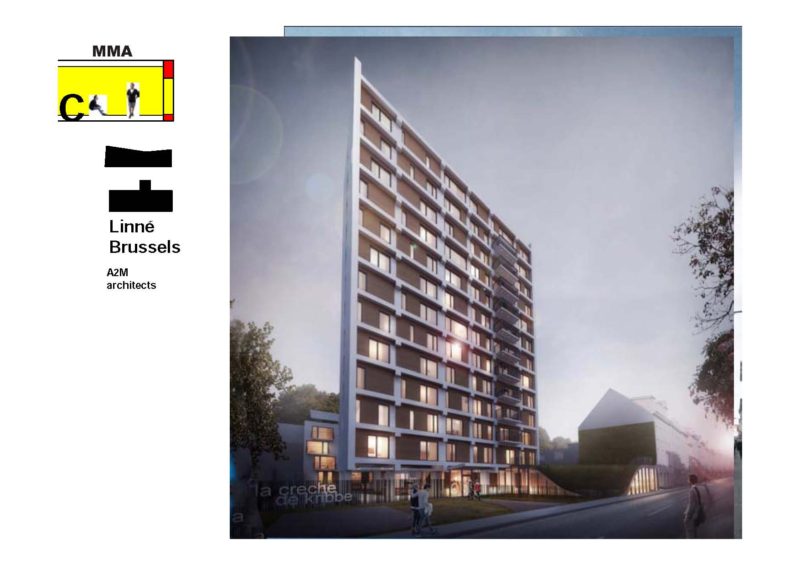
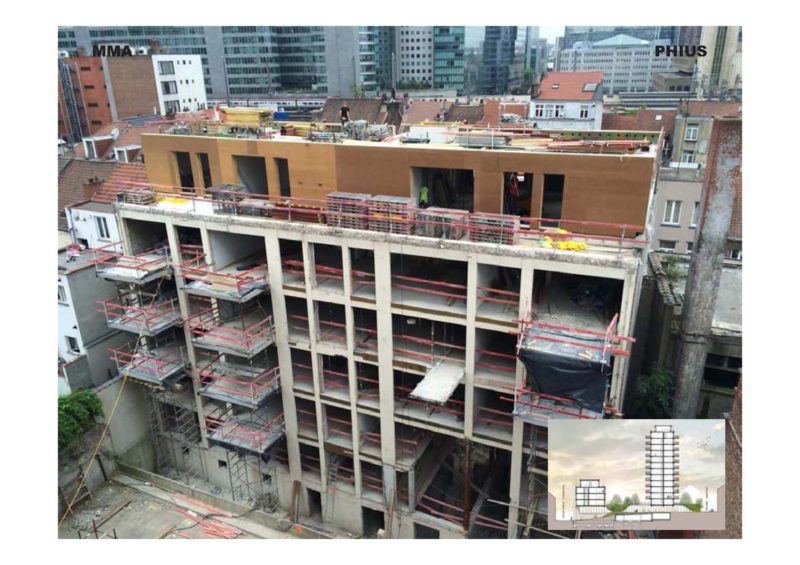
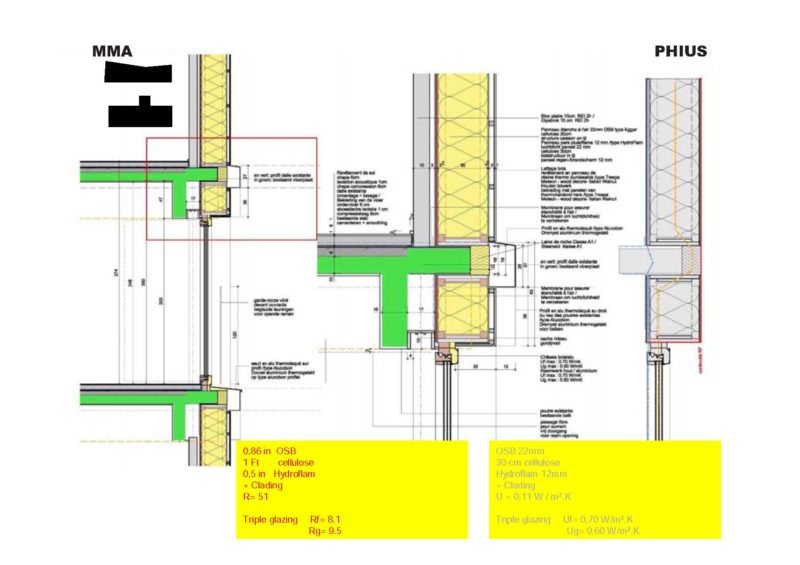
4 Conclusion
Over the last 5 to 6 years the use of passivehouse techniques has increased impressively in the Brussels region. Today passivehouse retrofits are compulsory if the renovation concerns more than 75% of the envelope. If less than 75% is concerned, each renovated component should achieve some performance. The aim is always to permit to reach passivehouse standard at the end of the process, if all the components are gradually renovated.
Typical listed building renovation strategy, A2M architect
Since the Brussels Region is supporting the passivehouse development program (Exemplary Building program), we are seeing large-scale passivehouse renovations, focusing not only on thermal choices but also going further to zero energy…
Nowadays, Moreno-Vacca and Torres Moskovitz point out, in the Brussels Region’s context, retrofitting to Passive House is just…normal for large-scale renovations. Their experience with these projects allows them to focus not only on thermal and airtightness choices but also to go further towards net zero.
5 References
[1] See www.passreg.eu, the success model of Brussels front runner region (2012-2015)
[2] More information about the Belle-vue project : http://www.a2m.be/bellevue-hotel-meininger
[3] More information about the Astro tower project : http://www.altiplan.eu/projects/astro-tower
[4] More information about the Linné project : http://www.a2m.be/linne-plantes